Typical three-phase meter connection schemes
Preliminary stage
Connecting an electric meter (ES) is the final stage of electrical work. Before installing a three-phase ES, you must first have a wiring diagram. The device must be checked for seals on the casing screws. On these seals the year and quarter of the last inspection and the seal of the witness must be indicated.
When connecting the wires to the clamps, it is better to make a margin of 70-80 mm. In the future, such a measure will allow to measure the consumed power / current and remount if the circuit was assembled incorrectly.
Each wire must be clamped in the terminal box with two screws (they can be clearly seen in the photo below). The top screw is tightened first. Before tightening the bottom, you need to make sure that the top wire is clamped, after pulling it. If a stranded wire is used when connecting the meter, then it must first be crimp tip.
Next, typical schemes for connecting a three-phase meter to the mains will be considered.
Direct inclusion
This is the simplest installation scheme. When directly switched on, the vehicle is connected to the network without measuring transformers (Figure 2). Most often, this installation method is used in household networks for electricity metering, where there are powerful installations with a rated current of 5 to 50 A, depending on the type of wiring (from 4 to 100 mm2). The operating voltage here, as a rule, is 380 V. When connecting the wire to a three-phase meter, it is necessary to observe the color order: the first phase A should be on the yellow wire, phase B on green, C on red. The neutral wire N must be blue, and the grounding PE should be yellow-green. For safe counter replacementsdirectly connected to the network, a switching device must be provided in front of each meter to relieve voltage from all phases connected to the meter. (PUE Chapter 7.1, clause 7.1.64).
A brief video instruction on connecting a three-phase meter is given on this video:
Single phase connection
Before describing this scheme of connecting the meter to the 380 V network, it is necessary to give a brief description of the differences between the three-phase voltage and the single-phase voltage. Both types use a single neutral conductor N.The potential difference between each phase wire and zero is 220 V, and with respect to these phases to each other - 380 V. This difference is obtained due to the fact that the oscillations on each wire are shifted by 120 degrees (Figures 3 and 4).
Single-phase voltage is used in private homes, in the country, as well as in garages. In such places, the power consumption rarely exceeds 10 kW. This also allows the use of cheaper wires with a cross section of 4 mm2 on the plot, since the current consumption is limited to 40 A.
For high-power receivers, it is recommended to use three-phase power supply to avoid phase imbalance above nominal value. When installing the meter, it is recommended to check the asymmetry of the load with clamp meters. Load sharing between the phases of the lighting network of public buildings should be, as a rule, uniform; the difference in currents of the most and least loaded phases should not exceed 30% within one shield and 15% at the beginning of the supply lines. (paragraph 9.5 SP 31-110)
A schematic diagram of connecting a three-phase meter to a single-phase network (OS) is not so common, since in such cases single-phase metering devices are used. In most cases, the circuit is similar to a direct connection wiring diagram, but phases 2 and 3 are not connected (connection occurs on one phase). In addition, after installation, there may be problems with the verification organizations.
Also about the possible problems of the operation of three-phase electric meters when connected to a two-wire network, you can watch in this video:
Connection via current transformers
The maximum current of the electricity meter, as a rule, is limited to 100 A, so it is impossible to use them in powerful electrical installations. In this case, the connection to the three-phase network is not direct, but through transformers. It also allows you to expand the measuring range of meters for current and voltage. However, the main task of the input transformers is to reduce the primary currents and voltages to nominal values for ES and protective relays.
About how to choose current transformers for the meter, read the article:https://my.electricianexp.com/en/pravilnyj-vybor-transformatora-toka-dlya-schetchika.html.
Semi-indirect
When connecting the meter through a transformer, it is necessary to monitor the order of connection of the beginning and end of the current transformer windings, both primary (L1, L2), and secondary (I1, I2). Similarly, you need to monitor the correct inclusion of the voltage transformer. The common point of the secondary windings of the transformers must be grounded.
The purpose of the contacts of the current transformer:
- L1 - input phase (power) line.
- L2 - phase line output (load).
- I1 - input of the measuring winding.
- I2 - the output of the measuring winding.
This type of inclusion of the electric meter in the 380 Volt network allows you to separate the current and voltage circuits, which increases electrical safety. The disadvantage of this electrical circuit of a three-phase meter connection is the large number of wires needed to connect the ES.
Star
This type of connection of an electricity meter with grounding to a 380 V network requires fewer wires. The inclusion of the star circuit is achieved by combining the I2 terminal of all CT windings into one common point and connecting to the neutral wire (Figure 6).
The disadvantage of this method of connecting the electric meter to the 380 Volt network is the negligence of the wiring diagram, which can complicate the inclusion check for representatives of energy supply companies.
Indirect
Such a three-phase meter connection scheme is used on high-voltage connections. This type of indirect connection is used in most cases only at large enterprises and is provided for information only (Figure 7).
In this case, not only current transformers are used, but also voltage transformers. For a three-phase connection, it is necessary to ground the common point of the current and voltage transformers. To minimize the measurement error, if there is an asymmetry of phase voltages, it is necessary that the neutral conductor of the network is connected to the zero terminal of the counter.
In the end, we recommend watching another useful video on the topic:
The electrical circuits proposed in the article are typical. In case of need, the connection diagram of the meter can always be found in the ES passport. We hope that the information was interesting and useful for you!

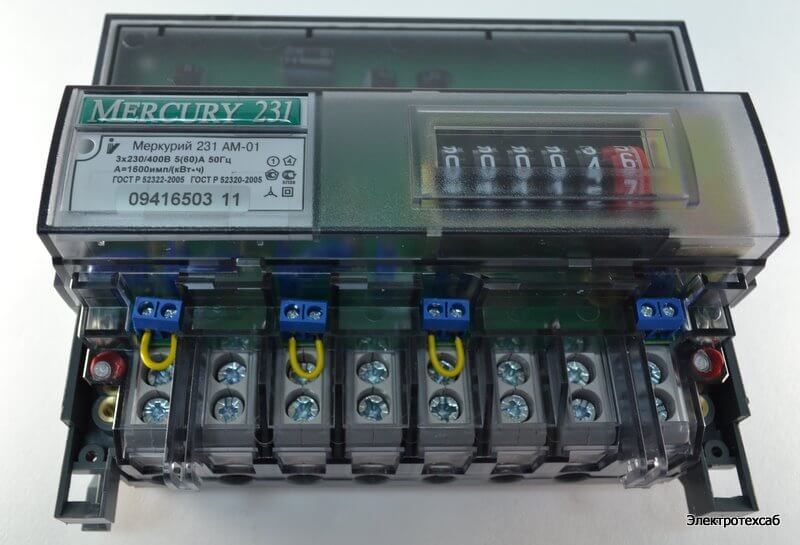
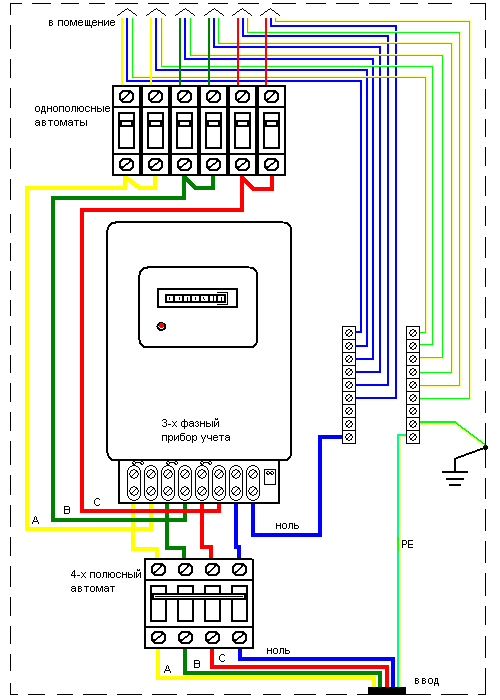
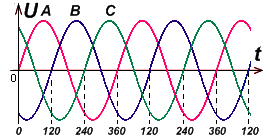
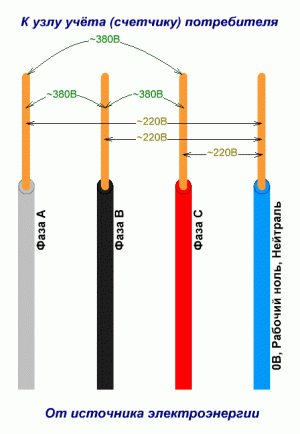
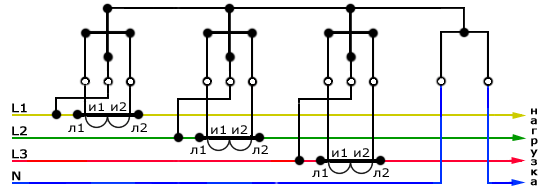

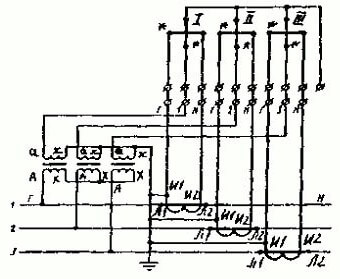


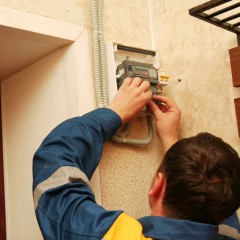
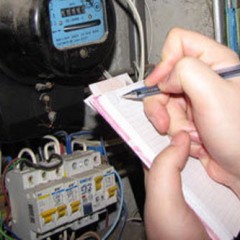
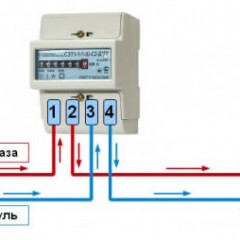

I like
Hello.
I have a question. need to change the counter. connected via current transformers, with grounded and1 on terminals 1/4/7 (and in the passport the same thing), on the meter, whose passport is grounded and 2 on terminals 3/6/9, will there be any problems?
Energy sales inspector requires connecting a four-wire network phase meter through a test box with a triangle. Tell me how 89145437166